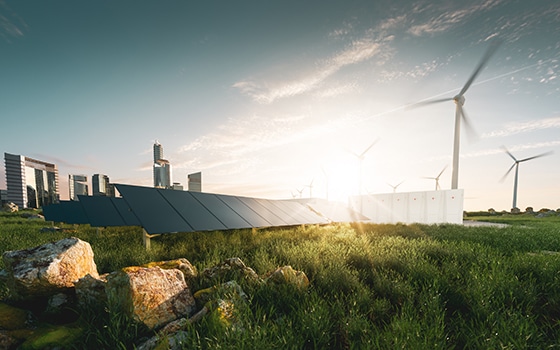-
InsightsInsight - Agriculture and Rural, Commercial Law, Energy - POSTED: August 16 2021
Reshaping the future of farming: Natural solutions in agriculture
- Share this article
- Print this article
-
-
Over recent years many companies and organisations have committed to the global pledge to realise and secure net zero greenhouse gas (GHG) emissions by 2050.
The agricultural sector, which is responsible for around 10% of GHG emissions in the UK, has made a similar pledge, with the NFU setting an ambitious target of reaching net zero GHG emissions across all agriculture in England and Wales by 2040.
With sustainability and combatting climate change high on the agenda, natural solutions are becoming more popular with agricultural businesses. They are both cheap and attractive, as well as helping businesses to meet their environmental responsibilities. Three of the most relevant to farmers and land owners are renewable energy, carbon removals and the Environmental Land Management (ELM) scheme, all of which offer an attractive combination of both environmental and financial benefits.
Renewable energy
The most popular sources of renewable energy within the agricultural industry are solar, wind and anaerobic digestion. From a financial perspective, the use of renewable energies such as these can reduce the expenses and fixed costs faced by farmers and land owners through improved energy efficiency. Similarly, the use of renewable energy can also provide an income stream through the sale of renewable energy stores. From an environmental perspective, it can help to combat climate change and support progress toward the ‘net zero’ target. It is suggested that through renewable energy, farmers and land-owners can also displace greenhouse gas emissions by coupling bioenergy with carbon capture and storage.
Carbon removals
Carbon removals have long been hailed as the most logical approach to adopt to achieve the ‘net zero’ pledge. Some of the most efficient and attractive carbon removal initiatives for those in the agricultural industry include tree planting, peatland restoration, soil improvements and coastal and marine restoration. Farmers and land-owners could easily enter the carbon market and use their land to capture, utilise and store carbon. The carbon removal initiatives listed above tie in very neatly with the ELM scheme, suggesting that farmers and land owners could benefit from both a private and public form of income.
ELM scheme
The ELM scheme is being introduced to replace the current Basic Payment Scheme (BPS), which will be gradually phased out over the next seven years and stopped altogether in 2028. The ELM scheme pays farmers and land-owners for the production of ‘public goods’ and requires methods of managing land, water and livestock to be performed in a way that ‘mitigates or adapts to climate change.’ This means farmers and land-owners will receive an income stream based upon improvements to the environment, the protection and enhancement of biodiversity, building resilience against climate change and increasing sustainability in the farming sector.
Defra is currently rolling out pilot ELM schemes across England and Wales. The ELM consists of three mechanisms:
- Sustainable Farming Incentive (farm husbandry): payment will be provided for actions that manage land in a sustainable way. The pilot scheme has already begun and it will officially launch in 2022.
- Local Nature Recovery: payment will be provided for actions such as creating, managing or restoring habitats, natural flood management and species management. The pilot scheme will begin in 2022 and officially launch in 2024.
- Landscape Recovery: payment will be provided for actions of large-scale forest and woodland creation, peatland restoration and creation/restoration of coastal habitats. The pilot scheme will begin in 2022 and officially launch in 2024.
Farmers will initially only be eligible for the schemes under ELM if they are a recipient of the BPS. However, the schemes under ELM will eventually open up to all farmers and land-owners. The scheme will give farmers an opportunity to secure a complementary income stream to their farm business by undertaking sustainable farming actions that benefit the wider environment.
It is clear that, with the agricultural industry following and hoping to surpass the global ‘net zero’ pledge, the sector will undergo many changes over the next few years in its bid to achieve sustainability and combat climate change. Although these changes are largely unknown it is clear that a focus on the sustainability agenda brings with it many avenues for income and capital that farmers and land-owners should consider as part of their longer-term business planning.
This article was first published in the August 2021 edition of South East Farmer.
This content is correct at time of publication
Can we help?
Take a look at our Agriculture and Rural page for useful information, resources, guidance, details of our team and how we may be able to help you
-
Key contact:
Get in touch
Please fill out the below form or alternatively you can call us on 01622 690691

